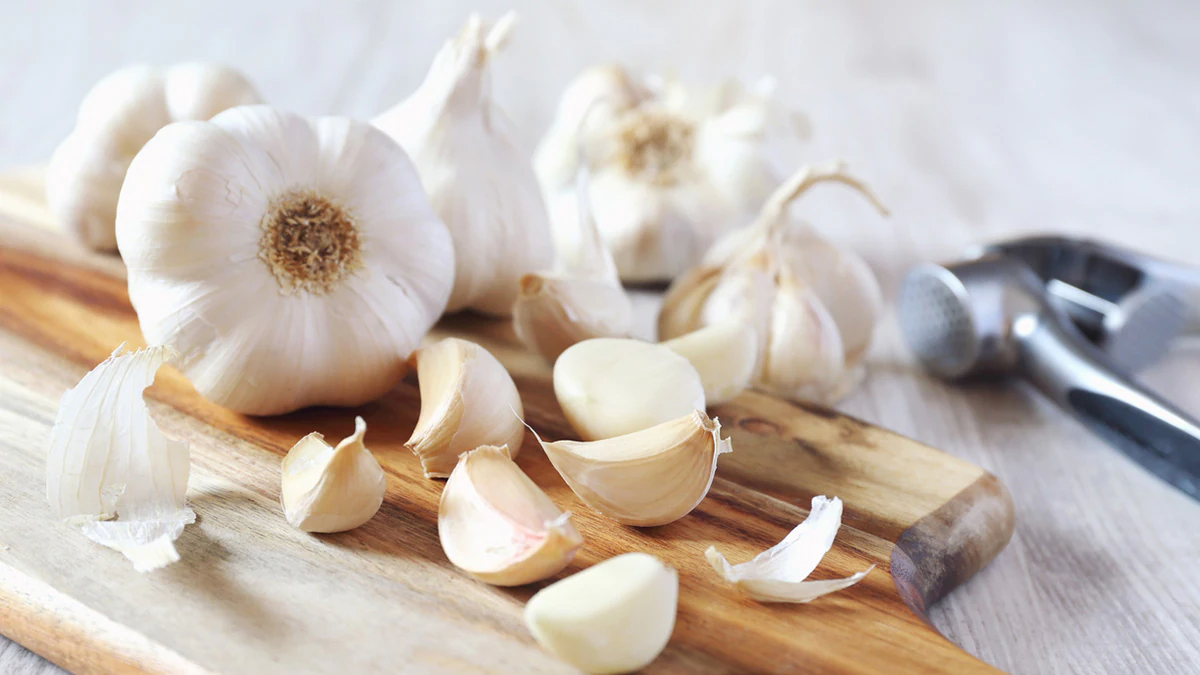Garlic is more than just flavor for your food—it’s a natural remedy rooted in centuries of healing wisdom. Whether you’re facing seasonal sniffles, want to strengthen your immune system, or simply prefer chemical-free wellness tools, garlic offers a safe, affordable, and science-backed solution for people of all ages.
Rich in antioxidants, antibacterial compounds, and anti-inflammatory agents, garlic can be used in a variety of practical ways at home—no supplements or prescriptions required.

Let’s explore 12 effective ways to use garlic to support your body’s natural defenses and promote clearer breathing, along with safe-use tips and complementary habits to help you feel your best every day.
Why Garlic Is a Natural Health Hero
Garlic (Allium sativum) contains a sulfur-rich compound called allicin, which is activated when garlic is crushed or chopped. This potent compound has been widely studied for its:
- Antibacterial and antiviral effects
- Immune-boosting antioxidants
- Support for circulation and respiratory function
- Anti-inflammatory properties
According to research, garlic can help the body respond better to everyday threats—from common colds to congestion—when used consistently and correctly.

Garlic for Immune Support
A strong immune system helps you stay resilient through seasonal changes and everyday exposures. Garlic may help by:
- Fighting bacteria that weaken immunity
- Reducing oxidative stress with powerful antioxidants
- Supporting white blood cell activity
- Lowering chronic inflammation, which often underlies poor immunity
Garlic for Respiratory Relief
Garlic has also been used traditionally to open airways, clear congestion, and soothe irritated lungs. It may support:
- Thinning mucus to ease chest tightnessReducing coughing and sore throat
- Improving circulation, which helps oxygen reach tissues
- Shortening the duration of respiratory infections

12 Safe Ways to Use Garlic for Immune and Respiratory Wellness
Here are easy, effective ways to include garlic in your routine—without taking supplements or pills.
1. Raw Garlic Clove (Daily Boost)
Crush 1 clove and let it sit for 10 minutes to activate allicin. Swallow or chew with a bit of honey.
2. Garlic Tea (Soothing & Steam-Friendly)
Boil 2 crushed cloves in water, steep for 5 minutes, strain, and add lemon or honey. Great during cold season.
3. Garlic-Honey Spoonful (Immunity Booster)
Mix 2–3 crushed cloves with 2 tablespoons of raw honey. Take 1 spoon daily, especially during flu season.
4. Steam Inhalation (Congestion Relief)
Add 2 crushed cloves to hot water in a bowl. Inhale the steam carefully for 5–10 minutes.
5. Garlic Soup (Comfort Food with Benefits)
Simmer garlic with onions, carrots, broth, and herbs. This warm remedy is nourishing and immune-friendly.
6. Garlic Stir-Fry (Daily Meal Boost)
Add 2–3 minced cloves to sautéed greens or vegetables. Easy to include in dinner.
7. Garlic-Infused Olive Oil (For Drizzling)
Warm 3 cloves in ¼ cup olive oil on low heat. Let sit, then drizzle over cooked food or salads.
8. Garlic-Ginger Tonic (Respiratory Support)
Blend 1 garlic clove, 1-inch fresh ginger, and water. Strain and sip once a day.
9. Garlic Toast (Flavor Meets Function)
Spread raw, minced garlic over warm whole grain toast. Add olive oil or butter for taste.
10. Garlic Smoothie (Disguised Dose)
Blend ½ clove with banana, apple, and water or yogurt. Helps mask the flavor while still providing benefits.
11. Garlic Foot Soak (Traditional Circulation Aid)
Add 4 crushed cloves to a basin of warm water and soak your feet for 15 minutes. Believed to help support detox and blood flow.
12. Garlic & Lemon Shot (Quick Kick)
Juice 1 clove with half a lemon and a splash of warm water. Drink quickly for a zingy immune boost.

Garlic Safety Tips for Everyday Use
Garlic is generally safe for most people, but keep these guidelines in mind:
- Start small: Too much raw garlic can upset your stomach. Begin with ½ clove if you’re sensitive.
- Limit topical use: Always test a small patch first—garlic can irritate skin if applied directly.
- Watch medication interactions: Garlic may thin blood. If you’re on anticoagulants, talk to your doctor first.
- Don’t overdo it: 1–2 cloves per day is plenty for most people.
- Use fresh garlic: Aged or powdered garlic may lose potency and beneficial compounds.
Combine Garlic with Healthy Daily Habits
Garlic works best when paired with a wellness routine. These simple lifestyle choices enhance its effects:
- Stay hydrated to flush toxins and keep airways moist
- Eat a variety of vegetables for broad immune support
- Walk or exercise regularly to improve circulation and lung function
- Sleep 7–9 hours nightly to recharge your immune system
- Practice hand hygiene to minimize infection risk
These habits create a stronger foundation—garlic is your bonus boost.

Who Benefits Most from Garlic Remedies?
Garlic is especially useful for:
- Adults over 40 wanting to naturally strengthen their immune and respiratory systems
- Busy caregivers and health-conscious individuals seeking simple home remedies
- Seniors managing mild inflammation or seasonal allergies
- Anyone looking for non-pharmaceutical respiratory support
- Children can use garlic in food-based amounts. For topical or concentrated use, always consult a healthcare provider first.
Final Thoughts
Garlic is one of nature’s most versatile health allies—affordable, accessible, and incredibly effective when used the right way. Whether you’re sipping a warm tea, adding it to your stir-fry, or inhaling its steam, garlic supports your body gently and powerfully.
Start with one method that suits your taste and routine. Stay consistent, and listen to your body. You may be surprised by how something as humble as garlic can make such a powerful difference.
Disclaimer: This article is for informational purposes only. Always consult your doctor before beginning new remedies, especially if you are managing health conditions or medications.


